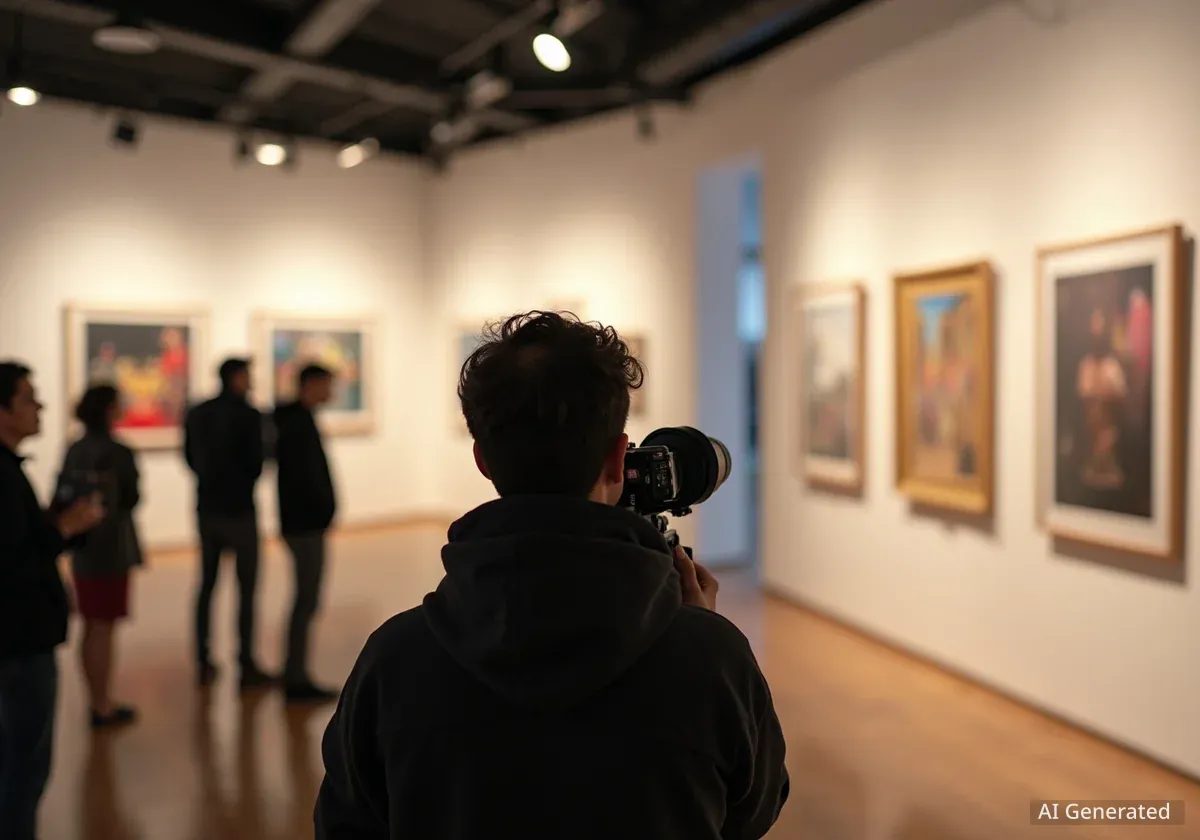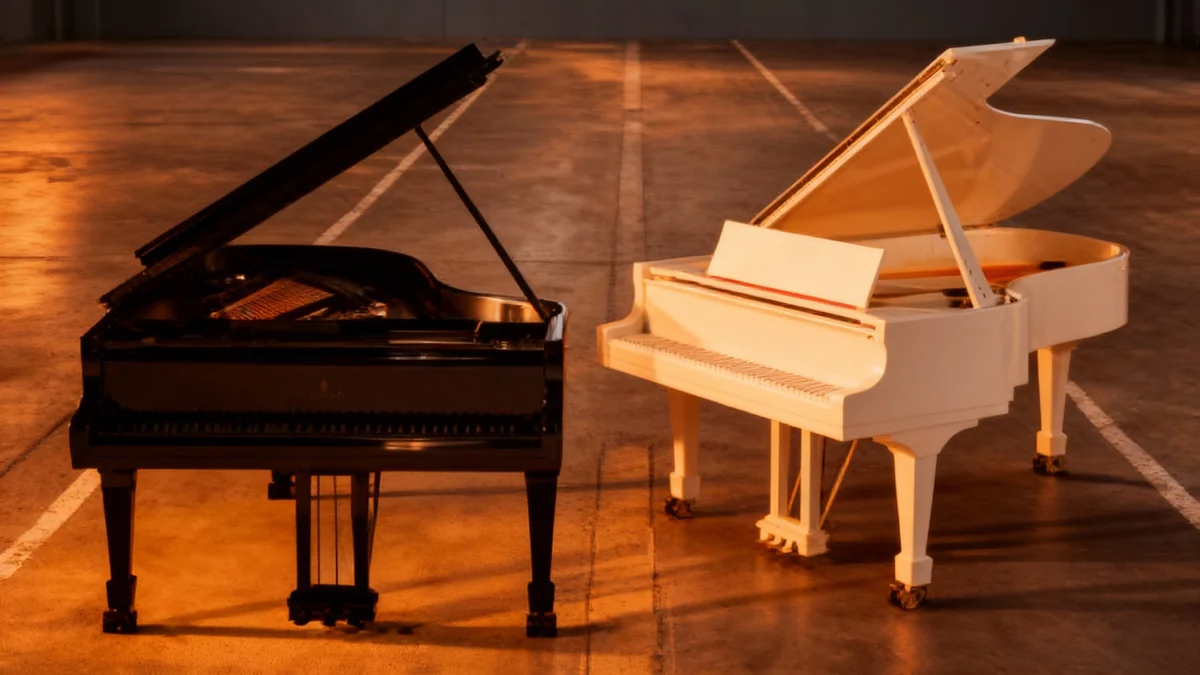An extraordinary, previously unknown painting by French Impressionist master Pierre-Auguste Renoir has been discovered in a private collection in Paris. The work, a stunning portrait titled "Portrait de jeune fille en blanc," is now slated for auction and is expected to attract global attention from collectors and institutions.
The painting, believed to have been completed around 1877, captures a young woman in a white dress, rendered with the characteristic light-filled brushwork that defined Renoir's most celebrated period. Its emergence marks one of the most significant art historical discoveries of the decade, adding a new chapter to the artist's extensive body of work.
Key Takeaways
- A previously undocumented painting by Pierre-Auguste Renoir, titled "Portrait de jeune fille en blanc," has been authenticated.
- The artwork was found in a private Parisian family collection, where it had remained for over a century.
- Art historians have verified its authenticity through stylistic analysis, provenance research, and material testing.
- The painting is set to be auctioned by Christie's in Geneva next month, with pre-sale estimates reaching between $15 million and $25 million.
A Century in Seclusion
The story of "Portrait de jeune fille en blanc" is as compelling as the artwork itself. The painting was held by the same French family for four generations, passed down as a beloved but largely unexamined heirloom. According to family history, it was acquired directly from Renoir's dealer, Paul Durand-Ruel, in the late 19th century by an ancestor who was a minor patron of the arts.
For over 100 years, the portrait hung in a private residence, away from public and scholarly view. Its existence was unknown to the art world, and it was not included in any of the comprehensive catalogues of Renoir's work, known as the catalogue raisonné. The current owners, who wish to remain anonymous, decided to seek an expert opinion on the painting during a recent estate appraisal.
This decision set in motion a chain of events that led to its authentication. Initial examination by local experts quickly suggested its significance, prompting the involvement of the Wildenstein Plattner Institute, the foremost authority on Renoir's work.
The Importance of Provenance
In the art world, provenance is the documented history of a piece of art. It traces the chain of ownership from the artist's studio to the present day. An unbroken and well-documented provenance is crucial for authentication and significantly increases an artwork's value and historical importance. The discovery of a direct link to dealer Paul Durand-Ruel was a critical factor in this painting's verification.
The Authentication Process
Verifying a newly discovered work by an artist of Renoir's stature is a meticulous process. Experts from the Wildenstein Plattner Institute conducted a multi-faceted investigation to confirm the painting's authenticity beyond any doubt.
Stylistic and Material Analysis
The first step involved a close visual inspection. Art historians noted that the painting's style—the feathery brushstrokes, the treatment of light on the subject's skin and white dress, and the intimate, serene mood—is entirely consistent with Renoir's output during the peak of the Impressionist movement in the late 1870s.
Scientific analysis provided further confirmation. Pigment analysis using X-ray fluorescence (XRF) spectroscopy identified materials, such as lead white and cobalt blue, that were commonly used by Renoir and other Impressionists. Examination of the canvas and stretcher bars also revealed them to be of a type used in late 19th-century Paris.
"Every detail, from the application of paint to the chemical signature of the pigments, points directly to Renoir's hand. It feels as though he finished it yesterday. Finding a work of this quality and freshness is a once-in-a-generation event," stated Dr. Hélène Dubois, a leading art historian involved in the verification.
A Snapshot in Time
Infrared reflectography, a technique that allows experts to see beneath the top layer of paint, revealed a preliminary sketch by Renoir. This underdrawing shows the artist's initial thoughts on the composition, providing a rare glimpse into his creative process for this specific piece.
Significance for the Art World
The discovery is more than just the addition of another painting to Renoir's oeuvre. It provides new insight into a period where he was moving toward more defined, classical forms while retaining his Impressionist sensibility. "Portrait de jeune fille en blanc" serves as a bridge, illustrating his evolving technique during a pivotal moment in his career.
For museums and collectors, the emergence of a completely "fresh-to-market" Renoir is a major event. Most of his top-tier works are already in museum collections and rarely become available for purchase. This painting has never been exhibited publicly, cleaned excessively, or restored, retaining its original vibrancy and texture.
Its condition is described as exceptional, which is expected to drive its value significantly higher at auction. The art market often places a premium on works with a unique story and a direct, unblemished line of ownership.
The Upcoming Auction
Christie's auction house has been selected to handle the sale, which will be a highlight of its upcoming Impressionist and Modern Art evening sale in Geneva. The pre-sale estimate has been cautiously set at $15 million to $25 million, though specialists believe the final price could easily exceed this range due to its rarity and pristine condition.
The auction house plans a global tour for the painting, with viewings scheduled in major art capitals before the sale. This will give potential buyers and the public a chance to see the newfound masterpiece firsthand.
- Pre-Auction Tour Cities:
- Hong Kong
- New York
- London
- Geneva
The sale will be closely watched, as it serves as a barometer for the health of the high-end art market. The result will likely influence market sentiment and could set a new benchmark for works by Renoir discovered under similar circumstances. For now, the art world celebrates the return of a lost treasure, a silent witness to a century of history, finally ready for its public debut.




